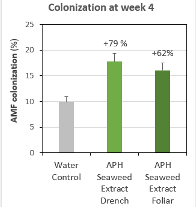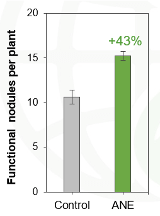
Soil Degradation: A Threat To Farms, Food, And The Planet
This is a summary of an article that first appeared in Nature, in June 2021. Read the full article here.
Most of us never think about the ground on which we walk. But the difference between the dirt we walk on, and the soil farmers most treasure, is that soil is alive: home to millions of diverse microbial organisms. Soil has structural integrity and is full of nutrients and minerals. But today we are seeing a concerning trend. Our soil is turning into dirt.
Soil degradation is one of the greatest threats facing humanity today and it’s increasing in severity and extent in many parts of the world. The challenge is clear: we have to conserve and improve the soil we have, and we need to turn dirt into soil wherever people grow food.
The health of soil is a primary concern to farmers and the global population whose food security depends on well-managed agriculture. Soil is the most important tool we have to feed a fast-growing world in the coming decades. To meet the demands of the world’s growing population, farmers must maximize their productivity in a sustainable way. It’s not optional.
How seaweed extract helps with soil structure
If you review the components of what makes soil healthy, mycorrhizal fungi and bacteria are key building blocks in creating a healthy soil structure. Without these tiny helpers working symbiotically with the plant, you cannot create an environment that is healthy and fertile.
Acadian Plant Health™ and its well-established Ascophyllum nodosum extracts (seaweed extracts) have proven to improve stress tolerance and crop vigour, but until recently had not been studied extensively to see the impact on soil microbes.
“Our goal was to evaluate two things,” says Dr. Timo van der Zwan, Molecular Biologist at Acadian Plant Health. “First, does the seaweed extract have a direct effect on increasing growth and colonization of mycorrhizal fungi, and second, whether it promotes the symbiotic relationship between the plants and the fungi. Our results showed that indeed there was a direct correlation between our seaweed extracts and the growth of the fungi as well as enhancement of the plant-microbe symbiosis.”
These results are a positive move to increase agriculture sustainability using these seaweed extracts to improve soil structure.

“In other research an intriguing finding was the increase in nodulation on the roots. Nodules are structures in roots in which nitrogen-fixation is improved for use by the plant. This could mean we can increase the efficiency of current fertilizer practices and have less reliance on nitrogen fertilizers. A very important topic for many farmers today, as fertilizer prices continue to increase.”
“Lastly, another level of agronomic benefit in which soil health can show value is with respect to pathogen control (soil-borne disease). A well-developed microbiome can suppress such pathogens, improving the germination of the seed and allowing the root structure to grow.This crop establishment creates a strong start for the crop and can lead to improved yields.”

Soil health and the climate
Restoration of degraded soils through adoption of regenerative or conservation farming practices can have a large impact – healthy soils store carbon. Plants absorb carbon dioxide during photosynthesis and convert it into carbohydrates, which they use to grow leaves, stems and roots. An increase in microbes and stronger roots are part of long-term carbon sequestration.
And that’s the bottom line – dead soil, or dirt, doesn’t have microbes or fungi to feed. By improving soil health we are preparing the soil to sequester carbon. The health and vitality of the soil in which crops are grown are integral to food production but also the climate. New tools for agriculture, such as seaweed extracts, offers farmers the chance to play an active role in mitigating this threat.
Soil plays a vital role in the world of agriculture – it is essential we figure out ways to conserve and revitalize this finite resource. We have been focused on how to get the most food out of the ground today – but to produce enough food for tomorrow we must consider new approaches and become farmers of the future.
Questions? Contact Us.